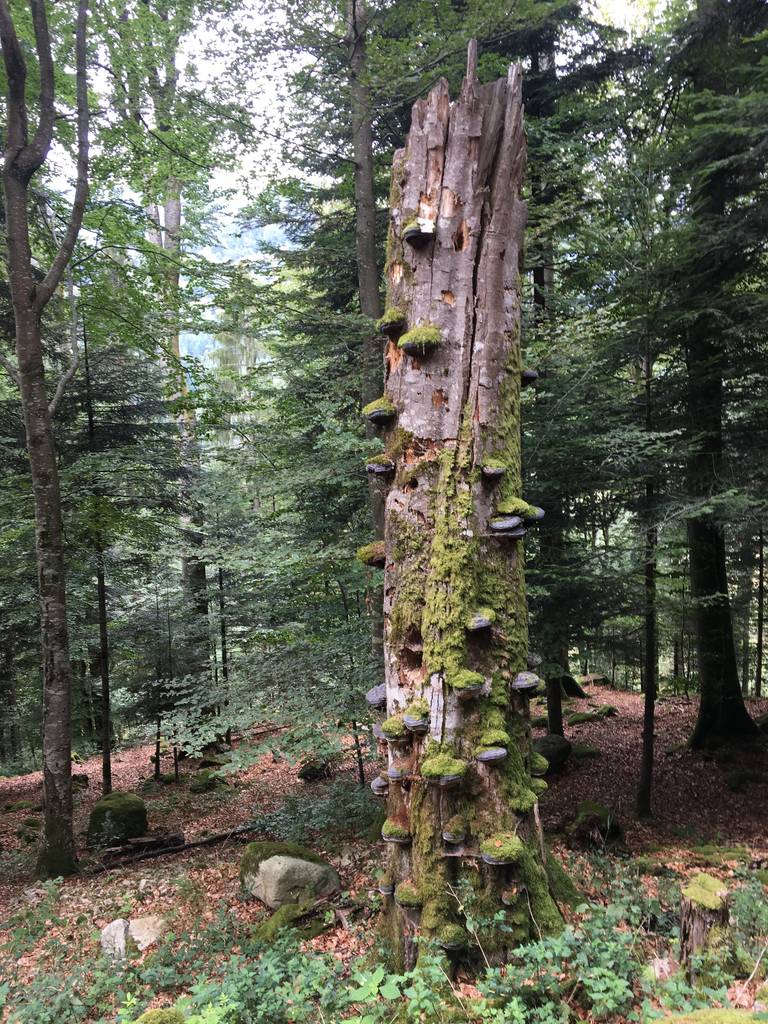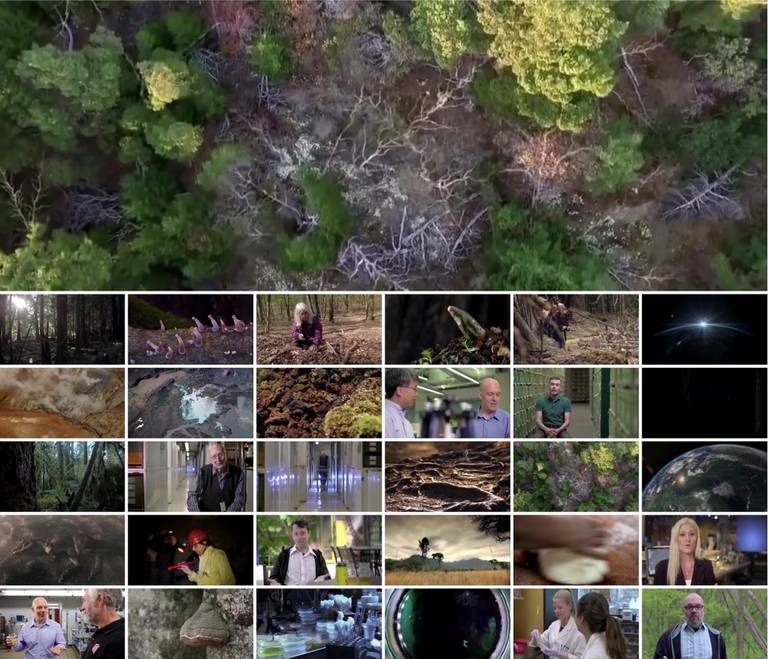»Wood Wide Web«
By analogy to the many roles intermediated by the World Wide Web in human communities, the many roles that mycorrhizal networks appear to play in woodland have earned them a colloquial nickname: the Wood Wide Web. Wood wide web can be described as plants' way of talking. Plants communicate through the mycorrhizal network in a similar manner to thoughts travelling over the brain's network of neurons.
There are two sorts of wood wide web: one sort is formed by the decomposer fungi, the rotters that break down dead plant material and they interconnect between lots of different dead resources. Without these decomposers life in the forest would soon be buried under dead stuff. Fungi eat death and in doing so they create life. The second type of wood wide web is formed between living plants, especially trees. Hungry for food fungal filaments called high feet are searching for tree roots. They envelop the root and some find their way inside. The entire forest is connected through the fungi. A vast network that traffic's in everything that forests need. This is nature's internet. An information Highway that allows trees to communicate and even send out danger signals to each other
Mycorrhizal networks are underground hyphal networks created by mycorrhizal fungi that connect individual plants together and transfer water, carbon, nitrogen, and other nutrients and minerals. The formation of these networks is context dependent, and can be influenced by factors such as soil fertility, resource availability, host or myco-symbiont genotype, disturbance and seasonal variation (due to enrichment of nitrogen in soil affect michozial communities or effect of human activities of human affecting nitrogen cycle).

